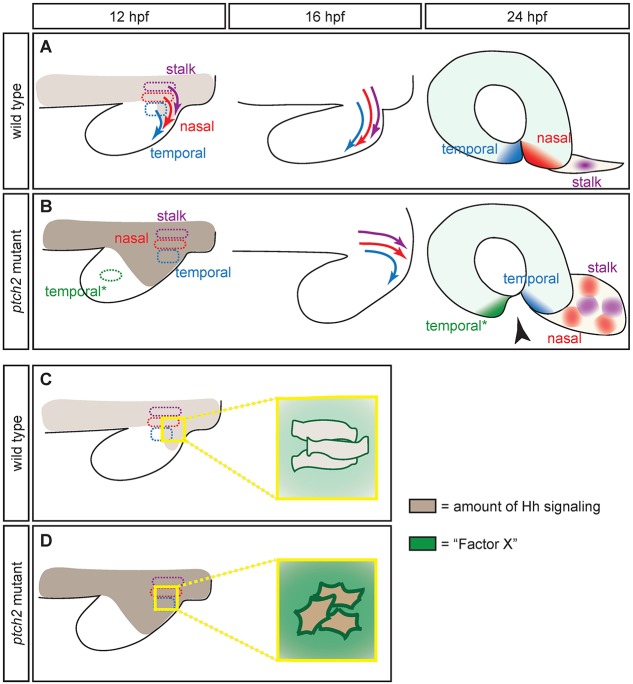Fig. 8.
Model for optic fissure and stalk cell movements and regulation by Hh signaling. (A) Optic fissure and stalk cell movements in wild type: adjacent cell populations (from origins marked as dashed circles) move along a J-shaped trajectory to occupy the optic fissure margins and stalk. (B) Optic fissure and stalk cell movements in the ptch2tc294z mutant: cells that should normally contribute to the optic cup are altered in their movement and do not achieve their correct position. (C) Proposed model for Factor X, a non-cell-autonomously acting cell surface or secreted molecule and downstream target of Hh signaling. Under wild-type conditions, Factor X is expressed at a level that ensures appropriate regulation of optic fissure and stalk cell morphology and orientation. (D) In the ptch2tc294z mutant, overexpression and expansion of Factor X leads to diminished elongation and defective motility.

